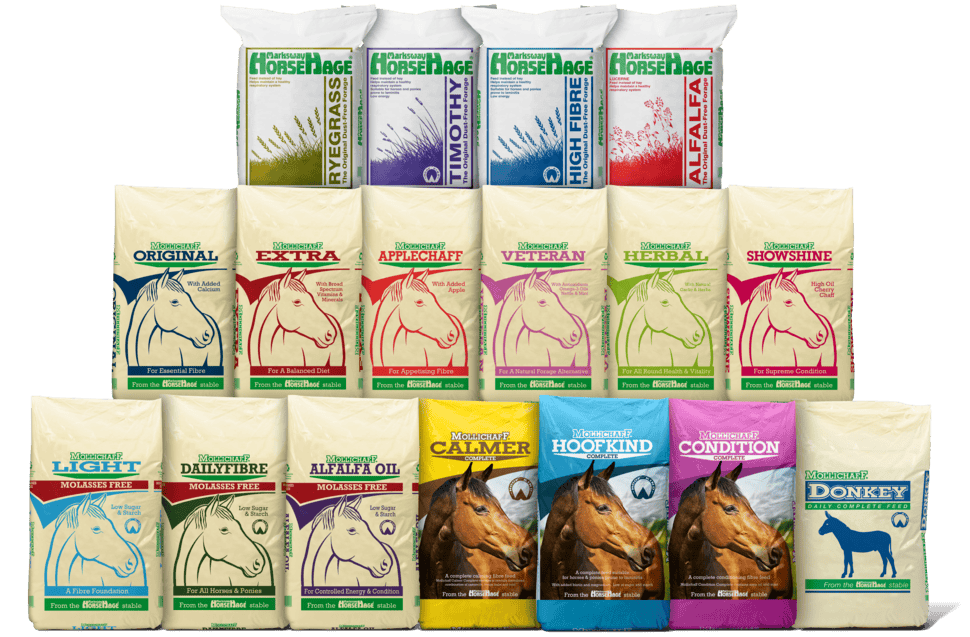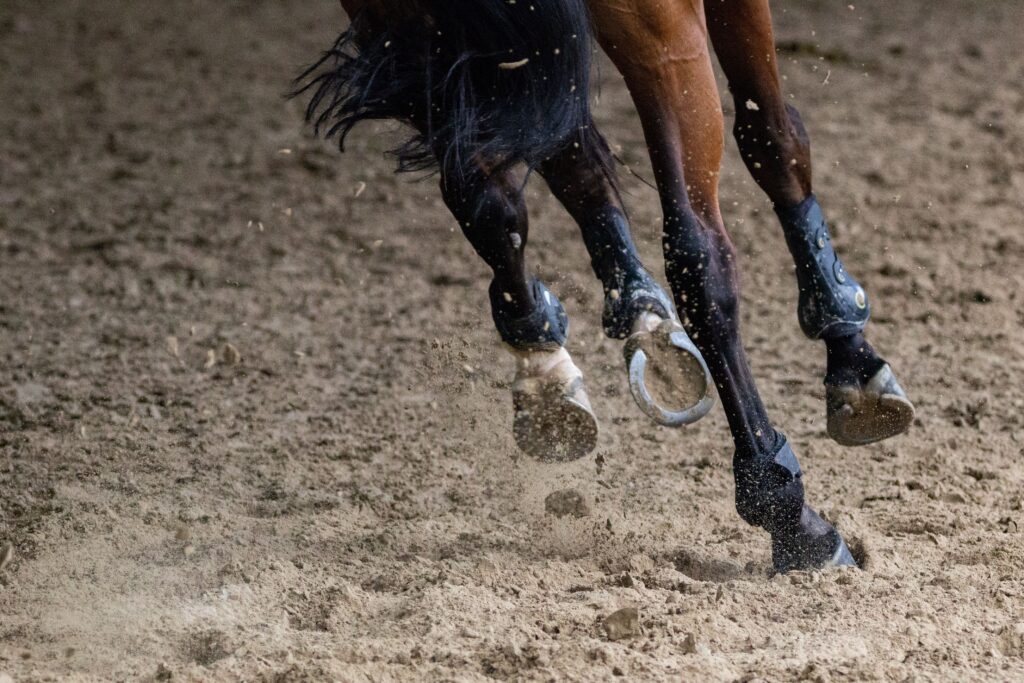
What causes laminitis?
Research has shown that around 80% of cases of Laminitis are linked with endocrine issues. Most frequently Equine Metabolic Syndrome (EMS) or Pituitary Pars Intermedia Dysfunction (PPID or Cushing’s). In both conditions, insulin dysregulation is a major risk factor.
These syndromes, combined with excess calories and obesity can put many horses at risk of laminitis, a painful condition that will need extensive medical support from a veterinary team.
Laminitis can also be caused by:
- Severe inflammatory disease – for example colic, diarrhoea, retained placenta.
- Mechanical Overload – supporting limb laminitis.
- Excessive intakes of high starch and or sugar (non-structural carbohydrates or NSC) such as Spring pasture or escaping into the feed room!
What should I do if I suspect laminitis?
If you suspect that your horse has laminitis, it is essential that you call your Vet straight away to ensure your horse has the correct diagnosis and treatment plan. Your vet will also need to work with your Farrier to ensure that the horse’s feet are supported correctly.
Laminitis is an extremely painful condition, often reoccurring and may be a symptom that there is something else going on in the body.
Laminitis affects the sensitive laminae within the horse’s foot that support the pedal bone. Once this tissue support breaks down, the pedal bone can sink or rotate causing severe pain and ongoing discomfort. In extreme cases the rotated pedal bone can protrude through the sole of the foot.
Feeding and management
Firstly, it is important to consider each horse as an individual, particularly if they have been diagnosed with a medical condition.
Feeding little and often is essential, along with ensuring the horse has a high fibre, low starch and sugar diet (non-structural carbohydrates – NSC), with a broad-spectrum mineral and vitamin supplement provided.
This is critical for a horse that has been diagnosed with an endocrine disorder that is causing laminitis, as it will help to reduce the peaks and troughs in blood glucose caused by insulin dysregulation.
Depending on the health and condition of the horse, pasture may need to be reduced or restricted altogether. Horses consume far more calories than we think whilst grazing.
For horses on a calorie-controlled regime, it is important to ensure the diet is still balanced, with a good quality protein to support the horse’s coat, muscles, hooves, health and performance. Restricted turnout and box rest may increase the risk of respiratory issues due to a dusty stable environment. A dust free forage may need to be considered.
Strip grazing, track systems and grazing muzzles may also help to control pasture intake and support your horse’s weight management regime. If you are lucky enough to have an arena, all weather area or large pen suitable for turnout, you may want to consider enrichment activities using lower calorie, fibre-based products including:
- Small buckets with handfuls of Mollichaff Light Molasses Free
- Forage balls for HorseHage or HorseHage mixed with straw
- Small forage nets dotted round pen
Soaking hay is a common practice for reducing the sugar or water-soluble carbohydrates (WSC) in forage, however, for many owners this is impractical and impossible in cold winter months.
Haylage can be a great alternative to this cumbersome task, as it offers the horse a highly digestible forage, providing calories, but low in NSC due to the fermentation. Many owners find it difficult to find a higher calorie food with a low NSC, making HorseHage suitable for the working horse or pony with EMS.
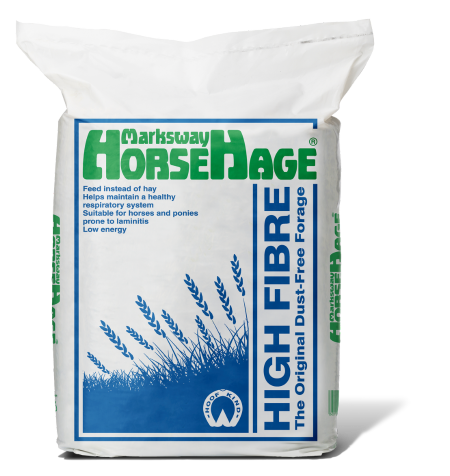
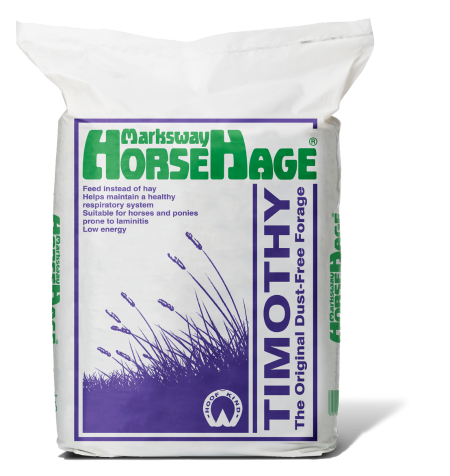
HorseHage is the market leading, dust free bagged forage product (haylage) that is low in starch and sugar and so provides low NSC calories.
HorseHage High Fibre or HorseHage Timothy may be a suitable forage to supplement your horse’s diet depending on workload.
HorseHage goes through a unique fermentation process, converting the naturally present sugars to the alternative energy source volatile fatty acids (VFAs) which will provide a sugar level that is consistently lower than good quality hay and is low calorie, but still provides high levels of fibre.
Mixing straw with HorseHage High Fibre and Timothy will increase the chewing time and reduce sugar and calories further. If used, straw should be introduced gradually, and water consumption monitored to reduce the likelihood of impaction.
There are many feeds available that may be suitable for horses that are prone to laminitis and picking the correct feed will depend on several factors, including whether your horse is on box rest or is exercising and needing more energy.
The high fibre, low starch and sugar range from HorseHage and Mollichaff can all be identified with the HoofKind logo which denotes they are all suitable for horses that are prone to laminitis, depending on calorie needs and where they are in their journey to recovery.
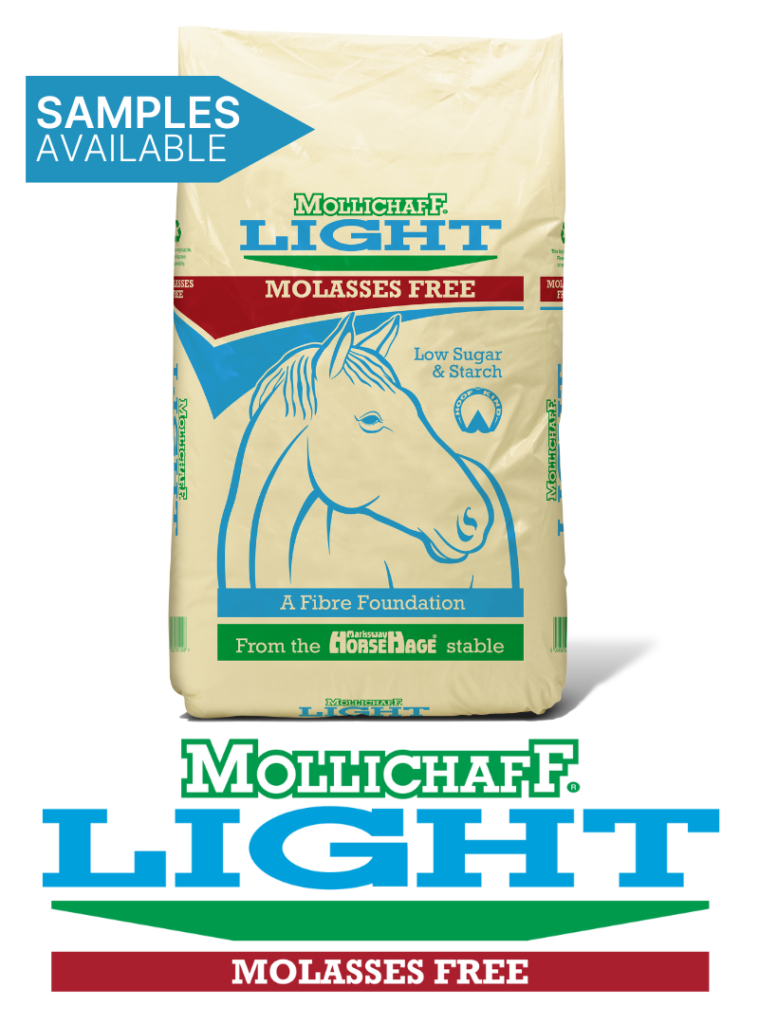
Mollichaff Light Molasses Free is a good source of fibre for horses and ponies on a calorie-controlled diet, as it is low in starch and sugar.
This chaff product can be used as part of a bucket feed, partial forage replacer or to help support enrichment activities for horses and ponies on restricted grazing.
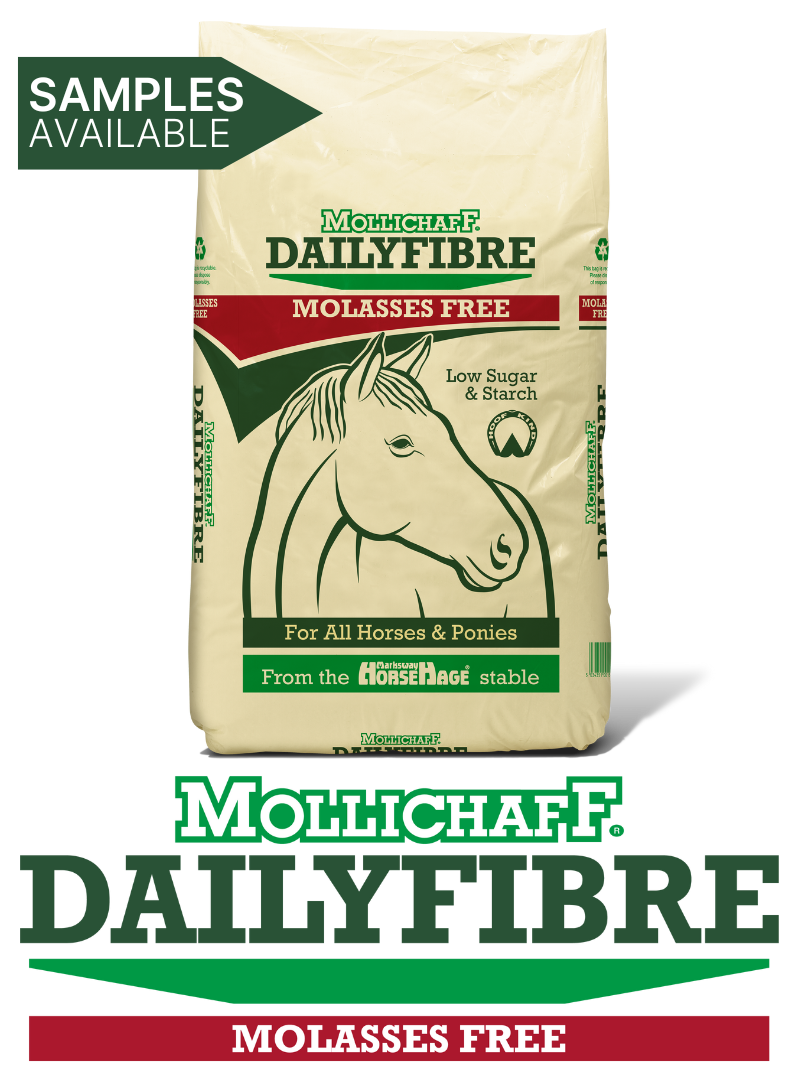
Mollichaff DailyFibre is a high fibre, low sugar, and starch chaff ideal for horses and ponies in light to medium work.
Packed with quality ingredients, DailyFibre provides controlled slow-release energy and supports healthy digestion, joint & nerve function, and a shiny coat.
Free from molasses, alfalfa, cereal grains, and preservatives.
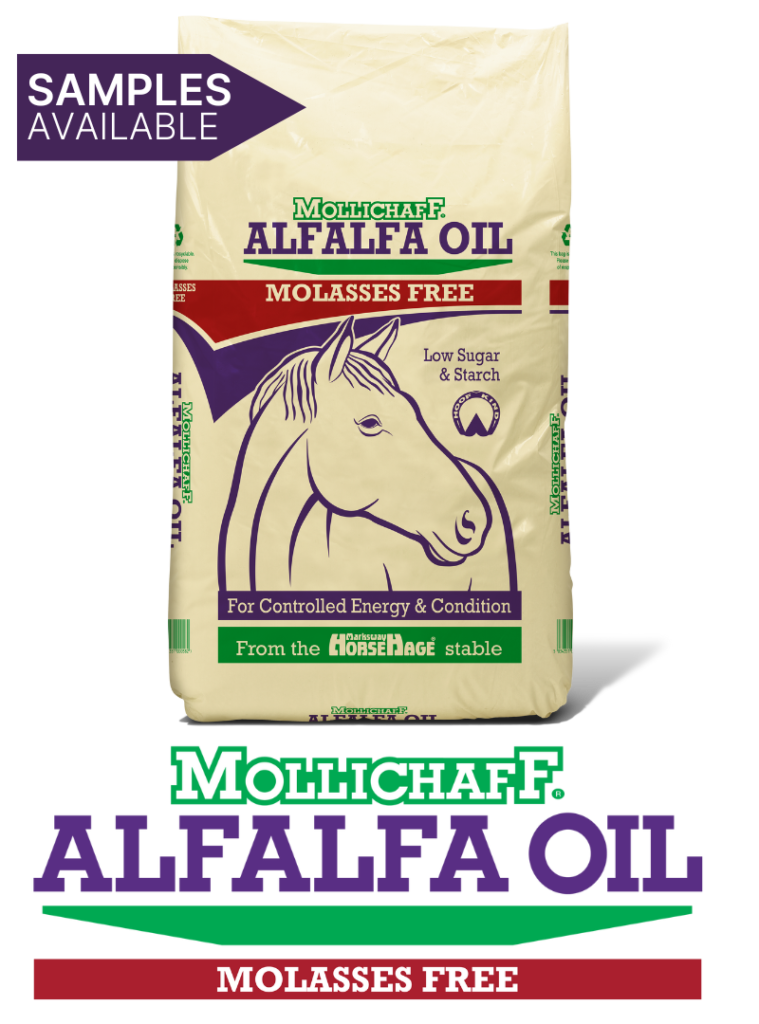
Mollichaff Alfalfa Oil is a molasses free option for horses and ponies with higher energy requirements or who struggle to maintain their condition.
It is naturally low in sugar and starch and suitable for horses showing signs of gastric discomfort and that are prone to laminitis. This highly palatable product has added oil for slow-release energy and to support a healthy coat.
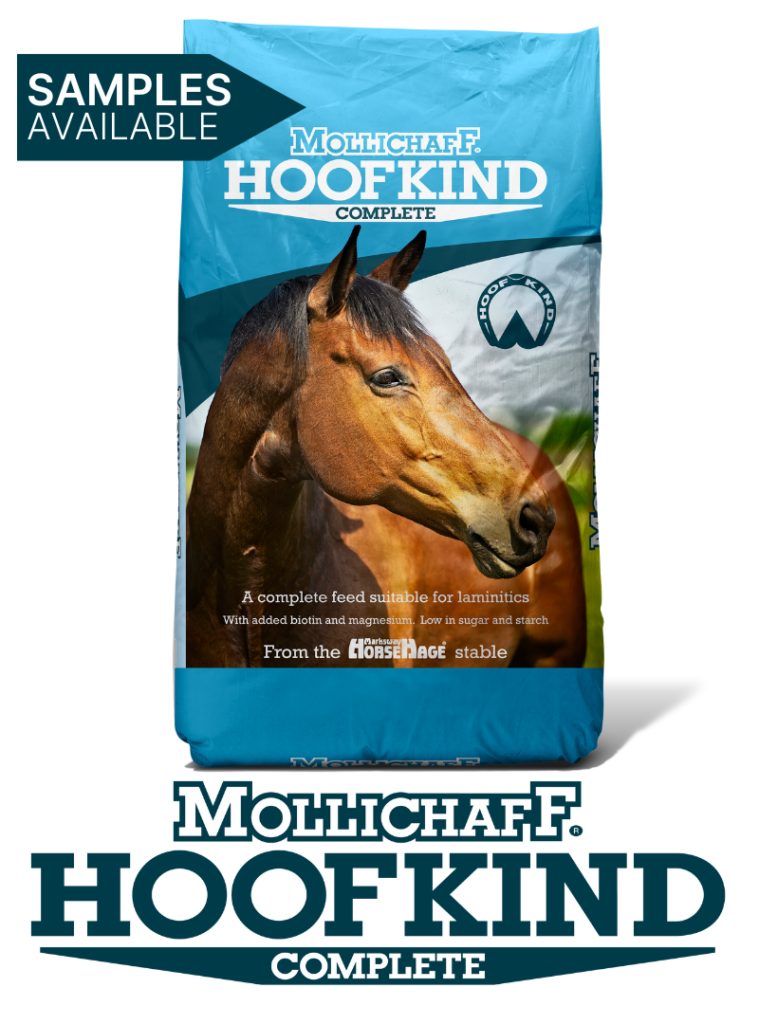
Mollichaff Hoofkind Complete is a highly palatable combination containing a balanced blend of oat straw, alfalfa, fibre pellets, soya oil, vitamins, minerals, trace elements, antioxidants and biotin.
It is low in starch and sugar, high in fibre and does not contain any cereals. Mollichaff Hoofkind was specially formulated for good doers, those that are in light work and need calorie-controlled diets.
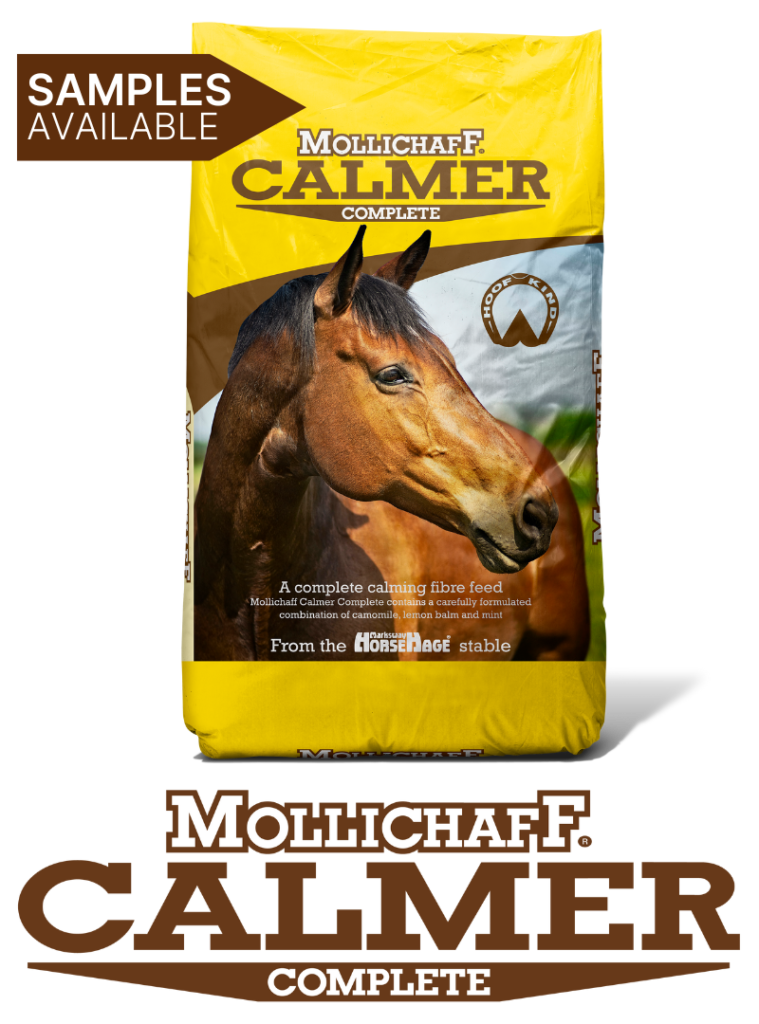
Mollichaff Calmer Complete is formulated with high-quality ingredients aimed at decreasing anxiety and exerting a calming influence making it ideal for those that are excitable or nervous.
This low starch and sugar complete feed is also cereal and alfalfa free and suitable for those that maintain their weight.
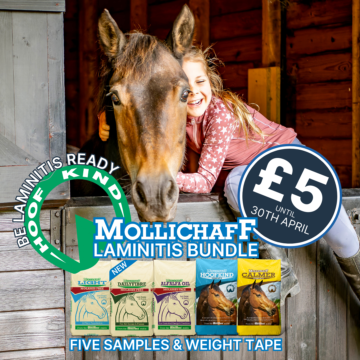
Mollichaff Laminitis Bundle
We understand that managing laminitis risk is a priority for horse owners.
That’s why we’ve created the Mollichaff Laminitis Bundle, an affordable and practical way to trial our carefully selected feeds suitable for horses and ponies prone to laminitis.
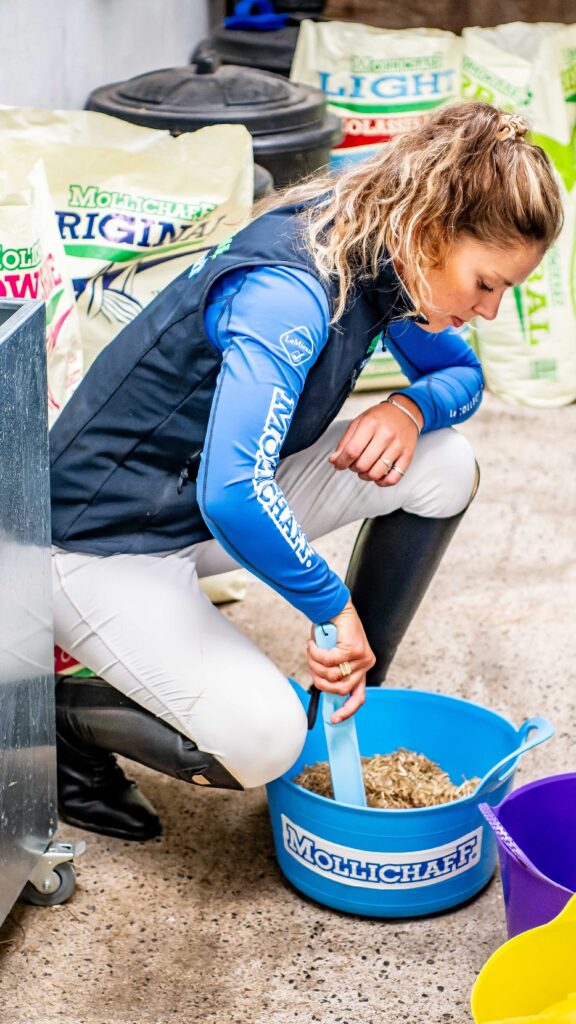
Weight Management
It’s our responsibility as horse owners to manage excess weight and reduce the risk of weight related health issues occurring.
However, there’s no one-size-fits-all approach to equine weight management, so a more tailored approach is required to craft a weight management strategy that works well for you and your horse.
Monitoring and recording your horse’s weight and condition score is vital. Weight tapes are easy to use, and your veterinary practice will have a weighbridge. Exercise is also extremely important for horses with endocrine issues and obesity.
Horses should only be exercised when they are sound, and this must be discussed with your Veterinary team before commencing.
Want free nutritional advice?
Our friendly and knowledgeable team is available on weekdays from 9am to 5pm.
Give us a call at 01803 527274 or send an email to sales@horsehage.co.uk

